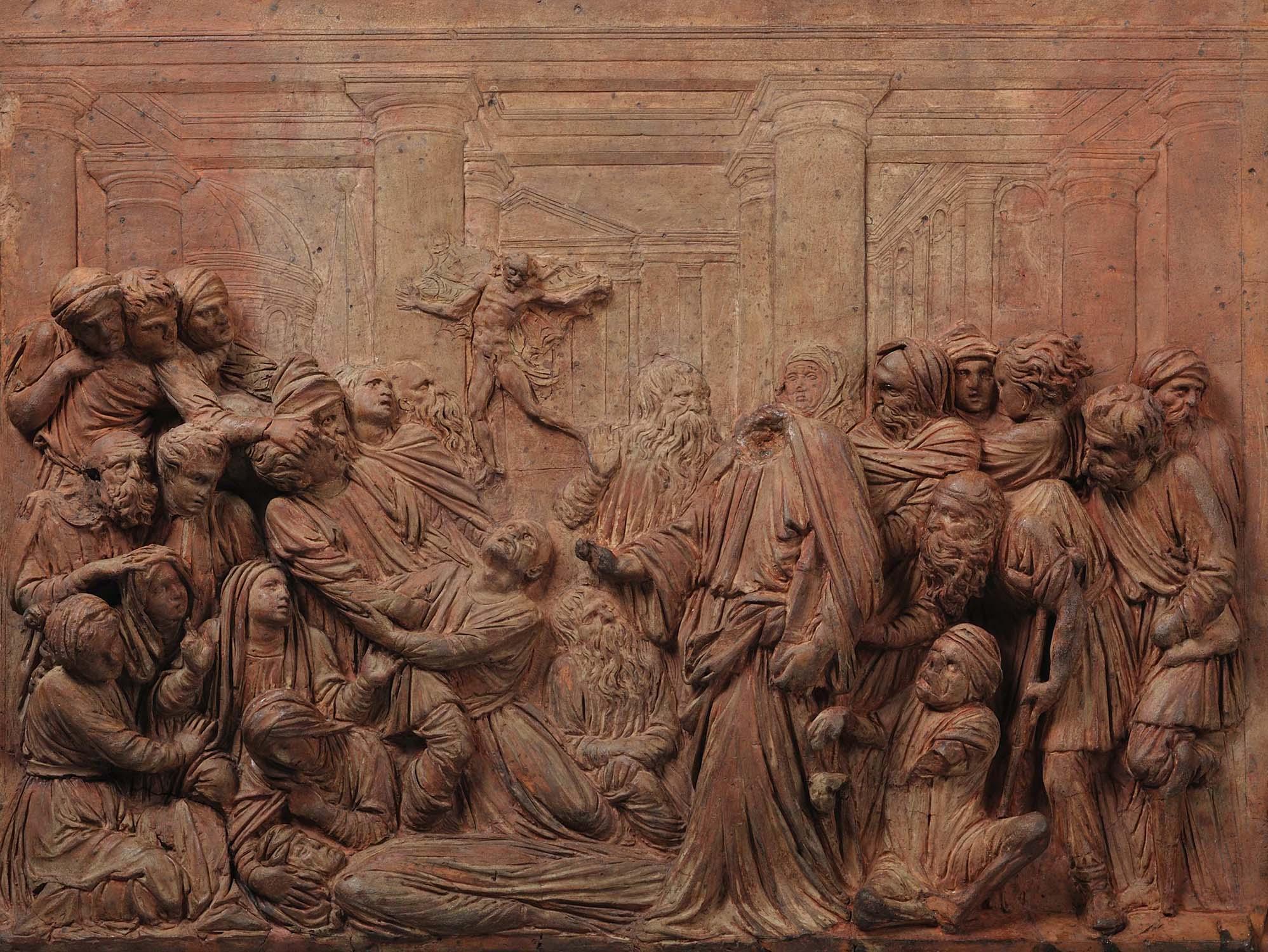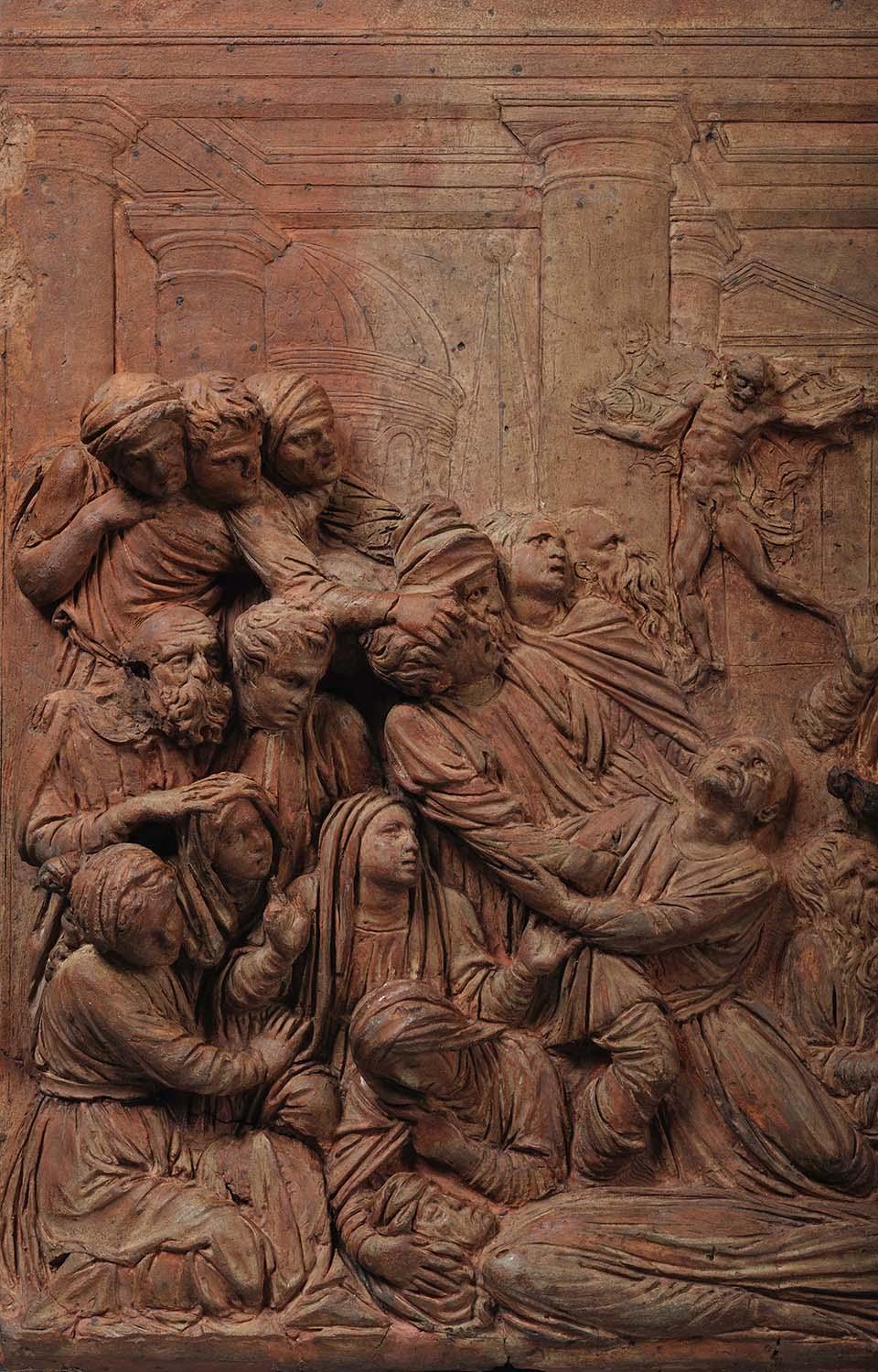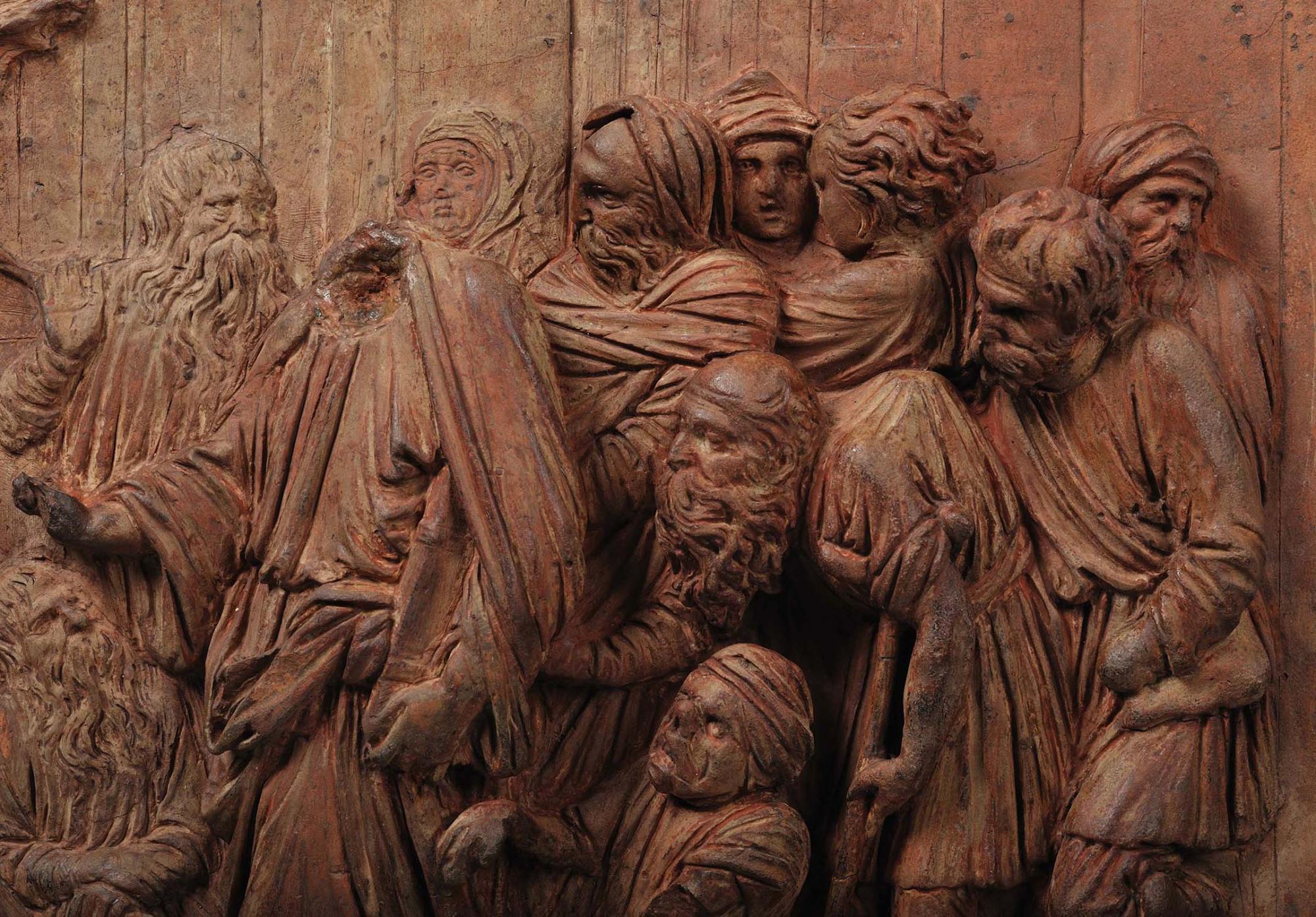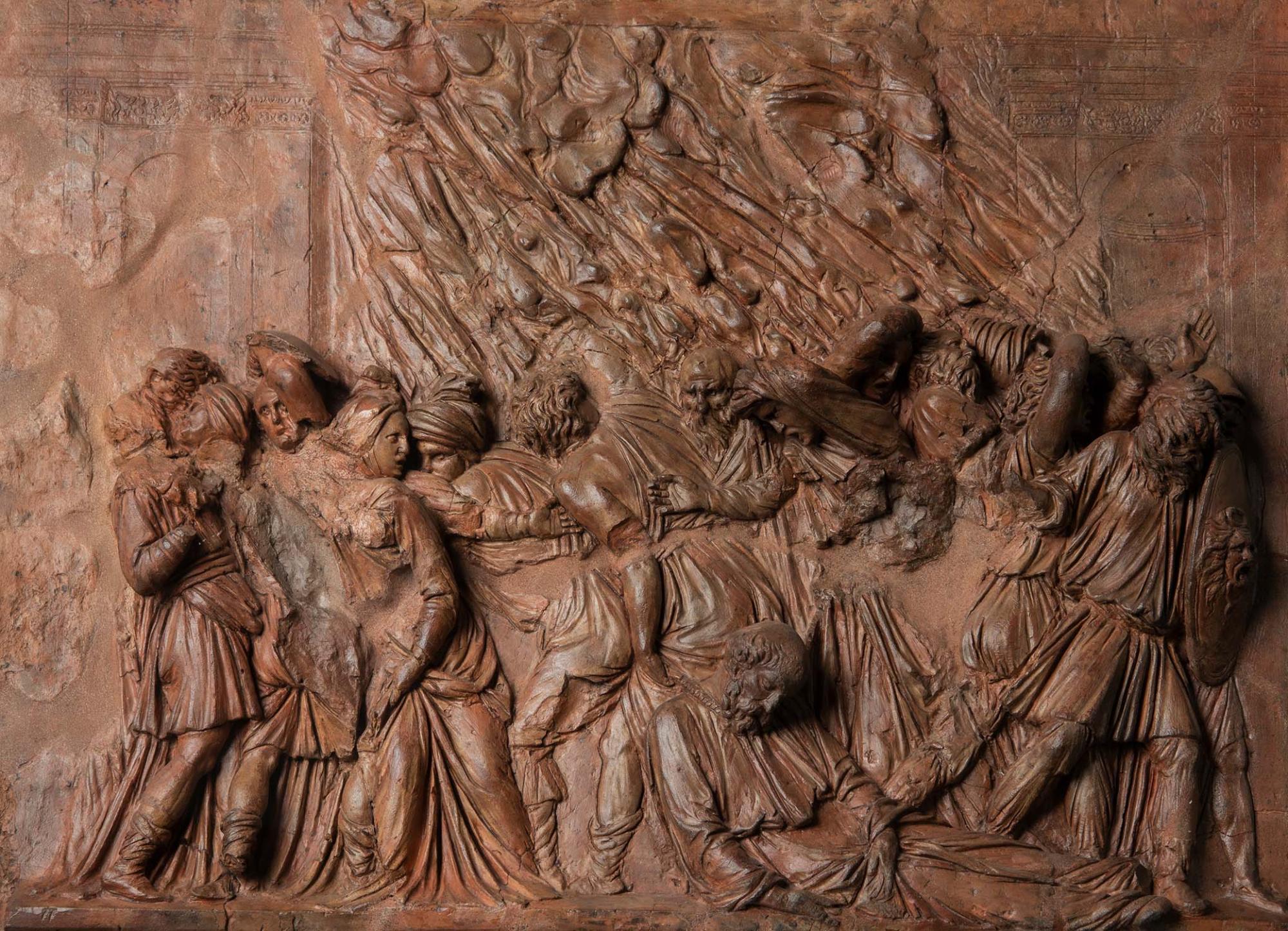The Miracles of St. Mark by Jacopo Sansovino
Two objects that are connected to a key work of art by the Renaissance master, originally from Florence but active mainly in Venice
Alone, these two reliefs - exhibited in the Palazzetto – would suffice to prove the significant value of the museum in the terracotta sector. Jacopo Tatti, known as Sansovino (1486-1570) moulded them in 1536. They're two of the eight pieces that the artist needed to create the eight bronze plaques with the Miracles of Saint Mark for the pulpit of Sant Mark's Basilica in Venice. The bronze versions were completed in 1542.
The first terracotta depicts The liberation of the possessed: San Marco, in the centre of the composition and surrounded by a crowd of men, women, young, old and sick people, drives out a demon, forcing him to move out of the body of the possessed. The miracle is set in Alexandria, Egypt, the last stop in the apostolate mission of Mark, which Sansovino portrays in the background as a classical city.
The second terracotta represents The rain of stones in the streets of Alexandria: St. Mark, dragged by his executioners with a rope hanging from his neck, is saved from martyrdom by a providential hail of stones. Once again, the location of the scene offered the artist a precise reference to the classic world, through the presence of pilasters and niched statues.
The two pieces boast an illustrious pedigree. They previously were part of the prestigious collection of Frida Löwenthal (1847-1923), wife of Ludwig Mond (1839-1909), who was also an art lover. They both were donated to Palazzo Venezia in 1921.














